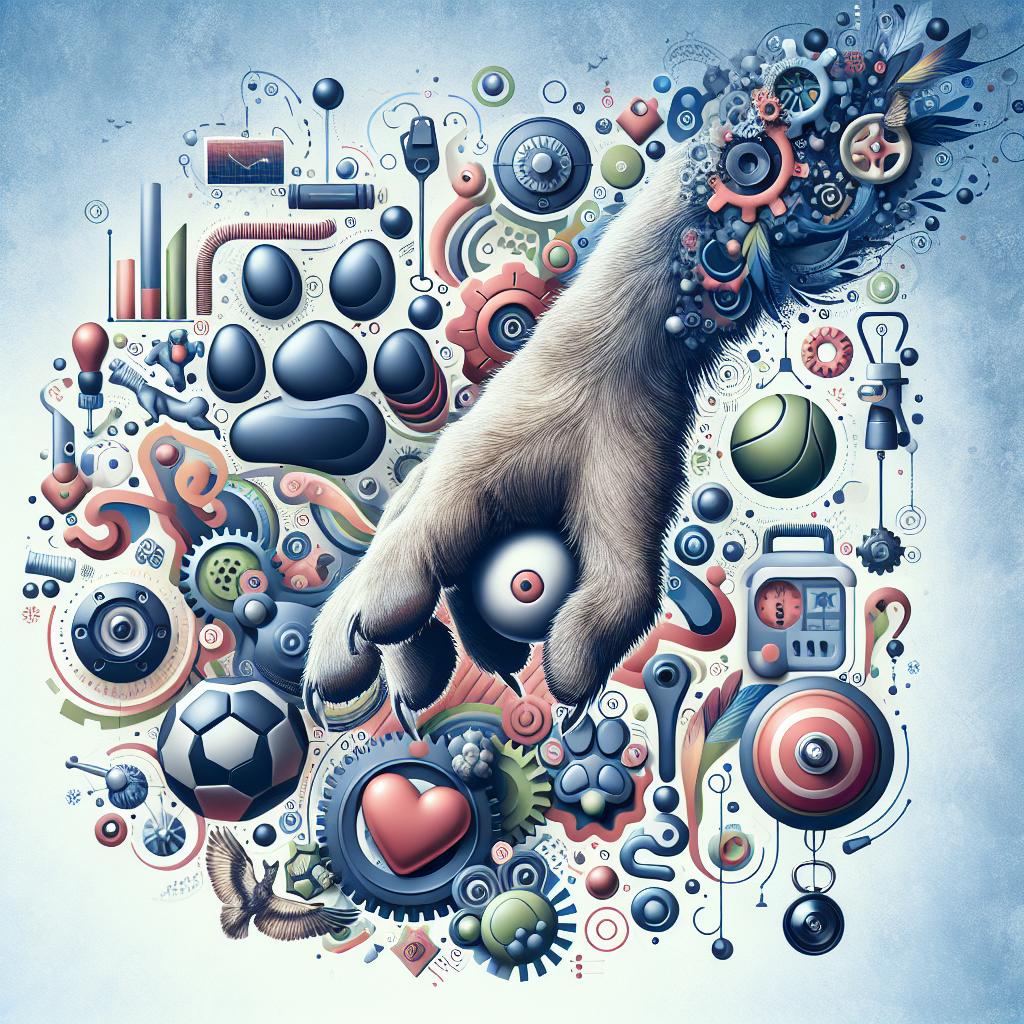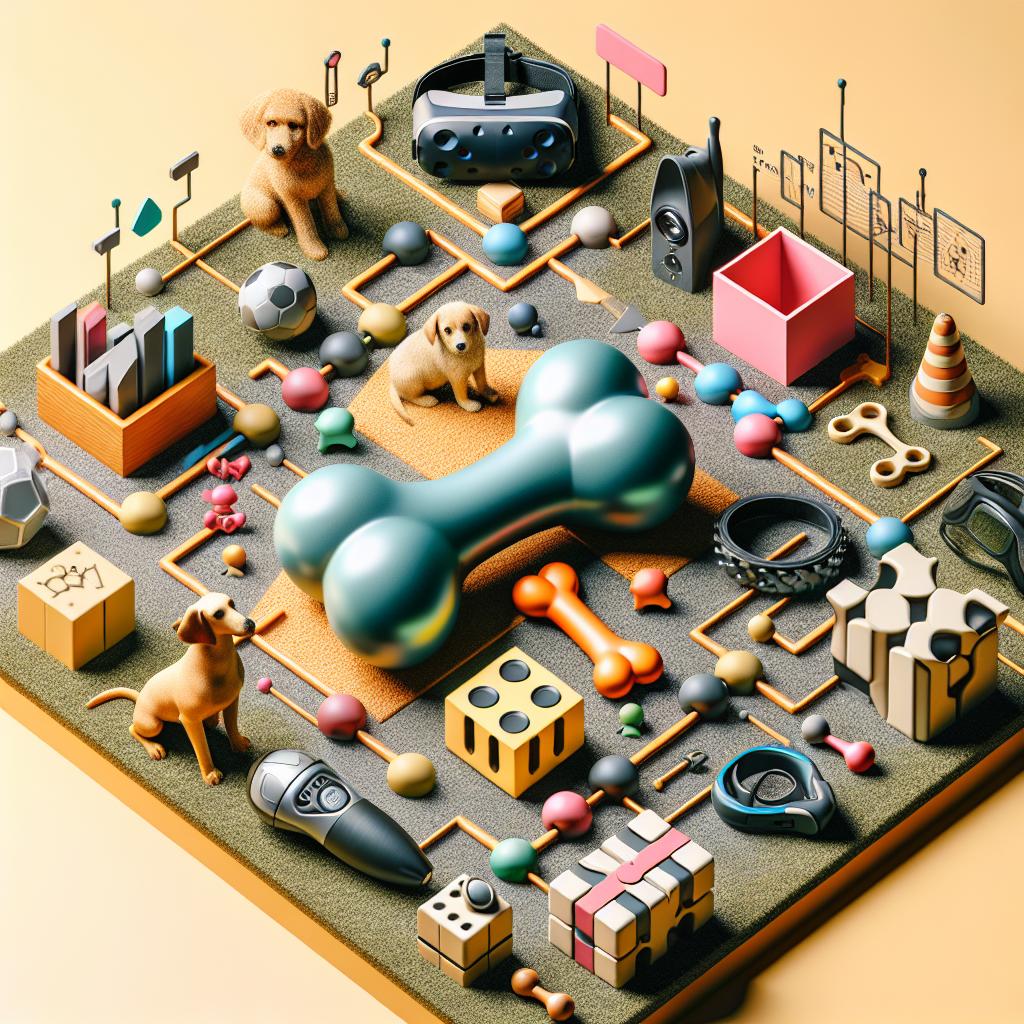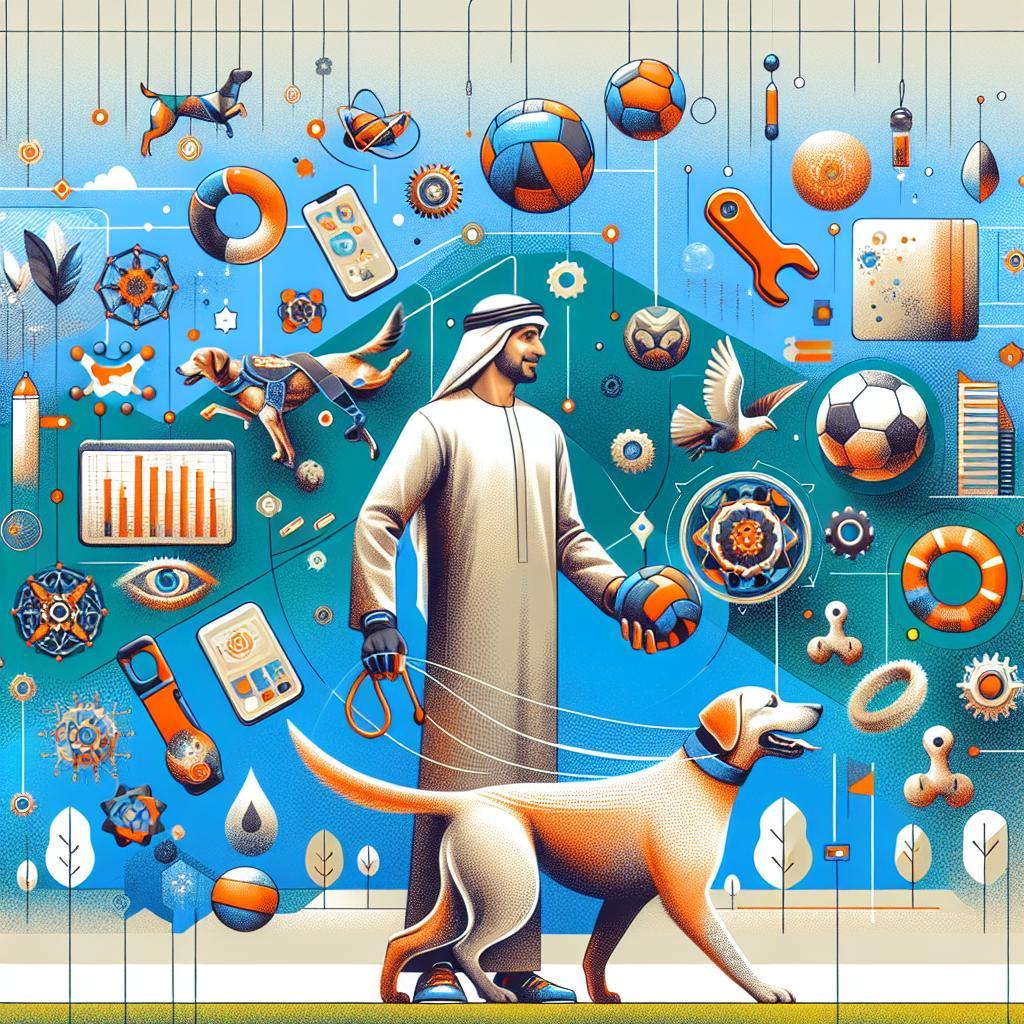Unleashing Potential: Using Toys and Games for Effective Dog Training
In the world of dog training, conventional methods often occupy the spotlight, guiding handlers through a maze of commands and corrections. However, there exists a vibrant and dynamic approach that not only cultivates obedience but also deepens the bond between humans and their canine companions: the strategic use of toys and games. Imagine a training session where enthusiasm replaces reluctance, where fetching a ball or solving a puzzle becomes a gateway to learning. This article explores the innovative ways toys and games can transform training into a joyful experience for both dogs and their owners. From engaging interactive toys to stimulating outdoor activities, we will delve into techniques that make learning fun and effective. Whether you’re a seasoned trainer or a first-time dog owner, discover how incorporating play can unlock the true potential of your furry friend.
Harnessing Playtime for Positive Reinforcement in Training
Incorporating playtime into training sessions can exponentially elevate the learning experience for your dog. By intertwining their favorite toys and games with essential commands, you not only keep their attention but also strengthen the bond you share. Interactive toys, fetch games, and puzzle toys can serve as both outlets for energy and tools for learning. For instance, using a frisbee during a recall exercise not just makes the training lively but also encourages your dog to return to you for a rewarding play session. This method of positive reinforcement transforms obedience training into a delightful experience that motivates your furry friend to participate actively.
To effectively harness playtime, consider creating a structured play schedule that integrates training objectives with your dog’s favorite activities. This can include various toys and actions tailored to target specific behaviors. Here’s a brief table summarizing ideal games alongside their corresponding training outcomes:
| Game | Training Focus |
|---|---|
| Fetch | Recall Commands |
| Tug-of-War | Impulse Control |
| Puzzle Toys | Problem Solving |
| Hide and Seek | Arousal Control |
With this systematic integration of play and training, your dog can learn essential commands in a fun and engaging manner, paving the way for a harmonious relationship grounded in mutual respect and understanding. Embrace this playful approach, and watch your dog’s enthusiasm for learning blossom!
Choosing the Right Toys to Engage and Motivate Your Dog
When selecting toys for your dog, it’s essential to consider their personality and play style. Different toys can appeal to various instincts such as chewing, chasing, or fetching. Interactive toys can keep your pup mentally stimulated while encouraging physical activity. You might want to explore options such as:
- Puzzle Toys: These challenge your dog to solve problems for treats.
- Chew Toys: Durable options can satisfy your pup’s natural urge to chew.
- Fetch Toys: Balls or frisbees that promote running and retrieving.
- Stuffed Toys: Often provide comfort alongside play.
Additionally, the materials and safety features of toys should not be overlooked. Opting for non-toxic and durable materials ensures that playtime remains safe for your furry friend. Always assess the size of the toys; larger breeds need sturdier options, while smaller dogs benefit from lightweight designs. To guide your choices, consider the following table that summarizes toy characteristics:
| Toy Type | Best For | Safety Note |
|---|---|---|
| Puzzle Toys | Intelligent and curious dogs | Ensure pieces are large enough to prevent choking |
| Chew Toys | Strong chewers | Check for wear and tear regularly |
| Fetch Toys | Active and playful dogs | Use in open spaces to avoid accidents |
| Stuffed Toys | Dogs that enjoy snuggling | Monitor for stuffing ingestion |

Incorporating Games into Obedience Training for Lasting Results
Integrating games into your dog’s obedience training can transform routine lessons into a fun and enriching experience. Dogs learn best when they are engaged, and using playful activities can reinforce commands while keeping their interest piqued. By combining obedience training with games, you not only teach important behaviors but also strengthen the bond you share with your furry friend. Some of the most effective games to consider include:
- Fetch with a Twist: Incorporate commands like “sit” or “down” before allowing your dog to chase the ball.
- Hide and Seek: Have your dog stay while you hide, then call them to come find you, reinforcing the recall command.
- Obstacle Courses: Set up a mini agility course that requires your dog to follow commands to navigate through it.
When implementing games into your training routine, consistency is key. Just as you would in traditional training, ensure that your commands are clear and rewards are given promptly upon successful execution. Using toys during training can also serve as powerful motivators. Establish a simple system to track your dog’s progress and celebrate milestones to keep the training experience positive and engaging. Here’s a quick reference table for game ideas and corresponding command focus:
| Game | Focus Command |
|---|---|
| Fetch | Drop It |
| Hide and Seek | Come |
| Obstacle Course | Stay, Sit |

Balancing Fun and Discipline: Strategies for Effective Play-Based Training
Successfully incorporating play into training not only enhances your dog’s learning experience but also strengthens your bond with them. When engaging in play-based training, consider short, focused sessions that balance fun with discipline. Aim to keep training sessions to about 5-10 minutes to maintain your dog’s attention. Here are several effective strategies to achieve that balance:
- Incorporate Positive Reinforcement: Use treats or toys as rewards for correct behavior. This creates a direct correlation between good behavior and positive outcomes.
- Use Interactive Toys: Invest in toys that challenge your dog mentally and physically. Items like puzzle feeders or tug-of-war ropes can be great additions.
- Establish Clear Boundaries: While playing, always reassert commands and expectations. For instance, allow playtime between commands like “sit” or “stay” to keep your dog focused.
Tracking progress can also enhance motivation for both you and your furry friend. Consider utilizing a simple table to monitor milestones during training sessions:
| Training Aspect | Progress Level | Date Reviewed |
|---|---|---|
| Basic Commands | Improving | 10/01/2023 |
| Play Responsiveness | Excellent | 10/05/2023 |
| Behavioral Cues | Needs Attention | 10/07/2023 |
This visual representation allows you to assess areas where more play can enhance training, ensuring your approach remains dynamic and joyful.
Q&A
Q&A: Using Toys and Games for Effective Dog Training
Q1: Can toys really aid in dog training?
A1: Absolutely! Toys and games serve as excellent motivators for dogs. They can transform training sessions into fun activities, making learning enjoyable. By incorporating toys that your dog loves, you can capture their attention and encourage positive behavior.
Q2: What types of toys are best for training purposes?
A2: The ideal training toys are those that engage your dog’s interest. Treat-dispensing toys, squeaky toys, and tug ropes can be effective. Puzzle toys also challenge your dog mentally, helping to enhance cognitive skills while reinforcing commands.
Q3: How can games facilitate obedience training?
A3: Games, like fetch or hide-and-seek, can reinforce commands and build a strong recall. When a dog associates following commands with playtime and rewards, they are more likely to respond quickly in real-life situations. Using games creates a positive association with training.
Q4: What are some tips for incorporating toys into training sessions?
A4: Start by using high-value toys that your dog is particularly excited about. Keep sessions short but engaging, and gradually introduce commands linked to play. For example, teach your dog to “fetch” before using the toy as a reward. Always reward desired behavior with playtime to strengthen learning.
Q5: Is it important to vary the games and toys used?
A5: Yes! Variety helps maintain your dog’s interest and prevents boredom. Rotate toys regularly and introduce new games to keep training sessions fresh and stimulating. This not only fosters excitement but also improves your dog’s adaptability to different commands and situations.
Q6: Are there any potential downsides to using toys for training?
A6: While toys can be incredibly beneficial, it’s essential to monitor your dog’s play behavior. Some dogs may become overly excited or distracted, which can hinder their learning. It’s crucial to balance toy use with structured training commands and ensure that the focus remains on learning.
Q7: Can toys also help address behavioral issues?
A7: Definitely! Interactive toys can redirect negative behaviors by engaging your dog’s mind and keeping them physically active. For example, using a chew toy can help alleviate anxiety or boredom, thereby minimizing destructive actions. Teaching alternative behaviors through toys can foster a healthier outlet for your dog’s energy.
Q8: How should I choose the right toy for my dog?
A8: Consider your dog’s size, breed, and chewing habits when selecting a toy. Durability is key; a toy should withstand regular play without breaking apart. Also, observe your dog’s preferences—some dogs prefer rubber toys, while others may enjoy plush ones. Tailoring your choice can lead to more effective training.
Q9: What if my dog isn’t interested in toys?
A9: If toys aren’t capturing your dog’s interest, try using treats or other rewards during training. Some dogs are more motivated by food than toys, so adapting your approach is essential. Additionally, observe what captivates your dog’s attention in their environment, and use that insight to find alternative training methods.
Q10: How can I ensure that my dog associates playtime with training?
A10: Consistency is crucial. Always reward your dog with playtime immediately after they successfully follow a command. Regularly integrating training into play helps your dog understand that obedience leads to fun. The goal is to create a cycle of learning and enjoyment that fosters a strong bond between you and your pet.
The Way Forward
As we conclude our exploration of using toys and games as effective tools for dog training, it’s clear that playtime can be more than just fun—it can be a powerful teaching moment. Embracing a playful approach not only strengthens the bond between you and your furry companion but also fosters a positive learning environment where dogs feel motivated and engaged. Whether it’s a simple game of fetch or an interactive puzzle toy, these activities can enrich training sessions with joy and enthusiasm. So, as you continue on this rewarding journey of training, remember to keep the spirit of play alive. Not only will it improve your dog’s skills, but it will also fill your adventures together with laughter, love, and countless treasured memories. Happy training!

